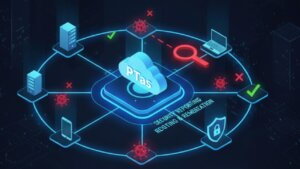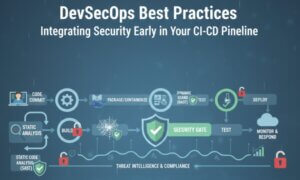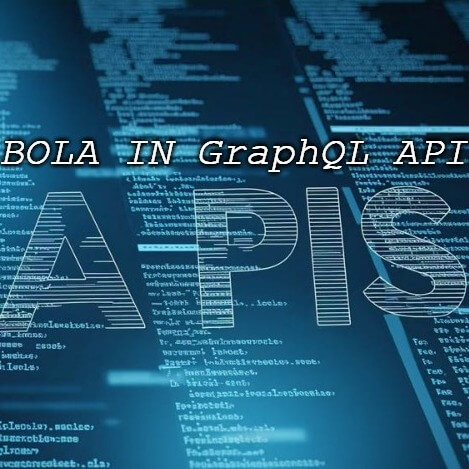As GraphQL continues to revolutionize API design with its flexibility and efficiency, it also introduces a new landscape of security concerns. One such critical vulnerability is Broken Object Level Authorization (BOLA), which has consistently topped the OWASP API Security Top 10. While BOLA is a well-documented issue in RESTful APIs, its presence in GraphQL APIs poses unique risks due to the query language’s dynamic and deeply nested structure.
In this blog, we explore how BOLA manifests in GraphQL environments, its implications for data security, and practical ways to detect and mitigate it.

What Is BOLA in GraphQL?
Broken Object Level Authorization (BOLA), also known as Insecure Direct Object Reference (IDOR), occurs when an API fails to properly enforce access controls on objects, allowing unauthorized users to access data they shouldn’t. In a GraphQL context, this vulnerability becomes even more potent due to the following:
Nested queries: Attackers can access related objects within a single query.
Custom resolvers: Developers may overlook proper authorization checks in individual resolvers.
Predictable object identifiers: IDs passed in queries can be guessed or incremented.
Example:
query {
user(id: "123") {
name
email
orders {
id
amount
}
}
}
If the API doesn’t verify whether the requester has permission to access user ID 123 and their related orders, it is vulnerable to BOLA.
Why GraphQL Is Especially Prone to BOLA
1. Flexible Query Structure
GraphQL allows clients to specify exactly what data they want, leading to complex nested queries. This increases the attack surface.
2. Resolver-Level Authorization
Unlike REST where endpoint-level checks are common, GraphQL requires checks in each resolver. One missed check can expose sensitive data.
3. Reusability and Shared Logic
Resolvers are often reused across queries and mutations. Improper scoping can lead to access leaks.
4. Lack of Granular Monitoring
Traditional API gateways and logging mechanisms might not provide visibility into GraphQL query behavior, making it harder to detect abuse.
Real-World Impact of BOLA in GraphQL
Several high-profile data breaches have involved insecure GraphQL implementations. Attackers have exploited predictable user IDs and missing authorization in resolvers to enumerate user data, financial records, and internal messages.
In multi-tenant applications, BOLA can allow attackers to access data belonging to other tenants, causing massive breaches of confidentiality.
How to Identify BOLA in GraphQL APIs
1. Threat Modeling and Query Mapping
Start by cataloging all GraphQL queries and mutations. Understand which objects are exposed and how identifiers are used.
2. Manual Testing with GraphQL Clients
Use tools like GraphiQL, Altair, or Insomnia to craft queries with varied object IDs. Try:
Accessing objects owned by other users.
Exploring nested relationships for lateral movement.
3. Role-Based Testing
Test access with different user roles (guest, user, admin) to uncover privilege escalation paths.
4. Authorization Audits in Resolvers
Review resolver code to ensure authorization logic is consistently applied. Missing or inconsistent checks are a red flag.
5. Use of Security Linters and Static Analysis Tools
Integrate GraphQL-specific linters in your CI pipeline to catch common security anti-patterns.
Mitigating BOLA in GraphQL APIs
1. Enforce Authorization in Every Resolver
Each resolver must verify that the requesting user has permission to access the requested object.
Example in JavaScript (Apollo Server):
const resolvers = {
Query: {
user: async (_, { id }, { user }) => {
const targetUser = await getUserById(id);
if (targetUser.id !== user.id && !user.isAdmin) {
throw new Error("Unauthorized");
}
return targetUser;
}
}
};
2. Implement Field-Level Authorization
Go beyond resolver-level checks. Sensitive fields like email, ssn, or roles may require additional conditions.
3. Use Opaque or Hashed Identifiers
Avoid exposing raw database IDs. Use UUIDs, hashed values, or indirect references that cannot be guessed.
4. Use GraphQL Middleware for Authorization
Leverage tools like graphql-shield to apply rule-based access control globally.
5. Rate Limiting and Query Complexity Analysis
Use query depth limiting, throttling, and allow-listing to minimize risk from deep introspection or enumeration attacks.
6. Logging and Monitoring
Log GraphQL query patterns, especially those involving object identifiers. Monitor for repeated access attempts to sensitive object IDs.
Best Practices for Long-Term GraphQL Security
Design with Principle of Least Privilege: Only expose necessary data and objects.
Document Security Requirements: Make authorization rules explicit in API documentation.
Security Unit Testing: Write unit tests for access control logic in resolvers.
Regular Security Audits: Conduct code reviews with a focus on authorization.
Security Headers and TLS: Ensure secure transport and disable introspection in production.
Conclusion
As GraphQL adoption continues to surge, so does the need for robust security practices tailored to its unique architecture. Broken Object Level Authorization remains one of the most severe and easily exploitable vulnerabilities in GraphQL APIs. By incorporating strict authorization checks at every layer of your GraphQL implementation, developers and security teams can stay ahead of attackers and protect sensitive data.
Securing GraphQL isn’t just about performance and flexibility—it’s about trust. Stay vigilant, review your access controls, and build APIs that are both powerful and secure.
Why Businesses Trust SecureMyOrg for Comprehensive Network Security
At SecureMyOrg, we uncover and fix all possible security vulnerabilities of mobile and web, while providing solutions to mitigate risks. We are trusted by renowned companies like Yahoo, Gojek and Rippling, and with 100% client satisfaction, you’re in safe hands!







Some of the things people reach out to us for –
- Building their cybersecurity program from scratch – setting up cloud security using cost-effective tools, SIEM for alert monitoring, building policies for the company
- Vulnerability Assessment and Penetration Testing ( VAPT ) – We have certified professionals, with certifications like OSCP, CREST – CPSA & CRT, CKA and CKS
- DevSecOps consulting
- Red Teaming activity
- Regular security audits, before product release
- Full time security engineers.
Relevant Posts

AI-Powered Phishing Emails: 7 Ways to Spot and Stop Them Before They Strike
Penetration testing as a service (PTaaS) lets experts simulate real attacks to uncover vulnerabilities before hackers do. This guide explains the process, benefits, and costs, helping businesses strengthen defenses with predictable, ongoing security checks.

Why Regular Penetration Testing is Essential for Modern Companies
Penetration testing as a service (PTaaS) lets experts simulate real attacks to uncover vulnerabilities before hackers do. This guide explains the process, benefits, and costs, helping businesses strengthen defenses with predictable, ongoing security checks.

What Is Penetration Testing as a Service?
Penetration testing as a service (PTaaS) lets experts simulate real attacks to uncover vulnerabilities before hackers do. This guide explains the process, benefits, and costs, helping businesses strengthen defenses with predictable, ongoing security checks.

How To Inspect Encrypted Traffic Without Breaking Privacy
Network administrators face a challenge: securing systems while respecting privacy. This guide explains how to inspect encrypted traffic without breaking privacy using metadata, anomaly detection, and machine learning ensuring visibility, compliance, and trust.

How to Audit Infrastructure as Code (IaC) for Security Vulnerabilities
Discover how to audit Infrastructure as Code (IaC) for security vulnerabilities with this practical guide. Learn to scan IaC files using tools like Checkov, fix issues like exposed resources, and integrate audits into CI/CD pipelines. Protect your cloud systems from misconfigurations and ensure compliance with clear, actionable steps.

DevSecOps Best Practices: Integrating Security Early in Your CI/CD Pipeline
This article provides a practical guide to embedding security into every stage of your CI/CD pipeline. Learn core DevSecOps best practices like SAST, DAST, dependency scanning, secrets management, and compliance automation to catch vulnerabilities early, foster a culture of shared ownership, and build a secure-by-design development process that accelerates release cycles.


